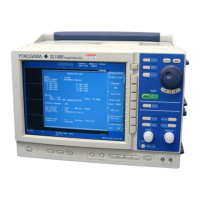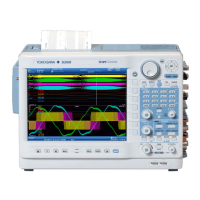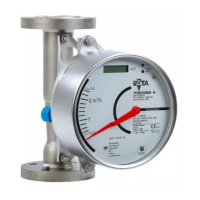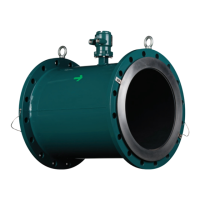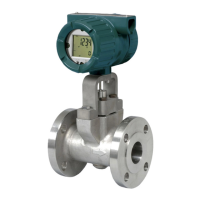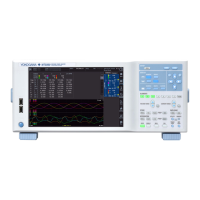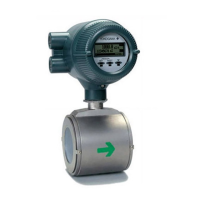1-13
IM 04P03B01-01E
Functional Explanation and Setup Guide
For the procedure to set the functions, see section 1.6, “Function Setup Guide.”
1
Alarm Printout
Alarm information is printed when an alarm occurs or releases.
Printout cannot be performed at the following chart speeds.
Pen model: 1800 mm/h or higher; Dot model: 120 mm/h or higher
Time of alarm occurrence/release
Indicates that there are alarms that are not
printed because the alarm printout buffer is full.
Level number
Alarm type (H: high limit, L: low limit, h: difference high limit,
and l: difference low limit)
Channel No. or tag
: Alarm occurrence, : Alarm release
• The print condition can be set to (1) print when alarms occur and release, (2) print
only when alarms occur, or (3) do not print.
• Alarms that occur while an alarm printout is in progress are temporarily saved to the
buffer memory in a printout-wait condition. Alarms are cleared from the buffer memory
when they are printed.
• The number alarms that can be stored in the buffer is 8 and 12 on the pen model and
dot model, respectively. Alarms that occur while the buffer is full are not printed. A
buffer overflow mark is printed when there are alarms that cannot be printed because
the buffer is full.
• The time printout format can be selected.
Manual Printout
Measured values and alarm status can be printed manually using the keys. When
manual printout is executed, trend recording stops and restarts when manual printout is
complete.
<For the operation procedure, see the
Operation Guide
.>
Message Printout
Printout cannot be performed at the following chart speeds.
Pen model: 1800 mm/h or higher; Dot model: 120 mm/h or higher
Preset messages can be printed on the chart paper using the keys. Five messages,
each within 16 characters, can be registered in advance.
• If message printout is executed while another message is being printed, the most
recent message is temporarily stored to the buffer memory in a printout-wait condition.
Messages are cleared from the buffer memory when they are printed.
• The number of messages that can be stored in the buffer is 5. If message printout is
executed when the buffer is full, the message is not printed. A buffer overflow mark is
printed when there are messages that cannot be printed because the buffer is full.
• The time printout format can be selected.
New Chart Speed Printout
Printout cannot be performed at the following chart speeds.
Pen model: 1800 mm/h or higher; Dot model: 120 mm/h or higher
• When the chart speed is changed, the time tick (dot model), the date/time of change,
and the new chart speed are printed. An asterisk (∗) shows there are messages that
cannot be printed.
• The time printout format can be selected.
1.3 Recording
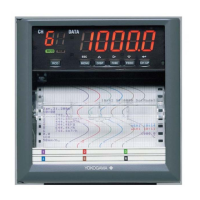
